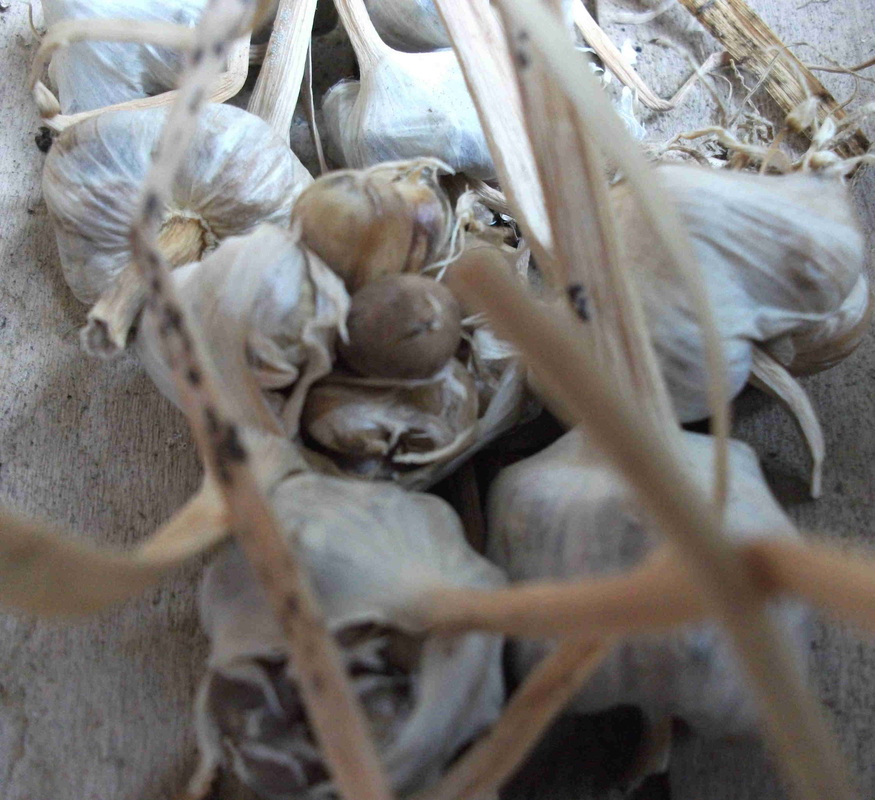You might be forgiven for thinking garlic is a subtropical plant - we associate it so with Mediterranean and Indian cooking. However, it is a native of parts of the world where the winters are colder than ours, so frost and snow won't harm it. What is doesn't like it water sitting round the roots, so if your allotment is inclined to be soggy in the winter, either raise the planting area slightly by making a ridge, or plant in a raised bed. Lime the soil well to deter fungus diseases, and put a bit of sand in the planting hole to help keep those roots healthy. Plant garlic deep - at least 3 inches (7.5cm) down - and some people say six inches (15cm)!
Do I need to buy special garlic for planting? Well, the jury is still out on that one. You'll probably get better results from one of the varieties bred for the British gardener, but it will cost you more at the start. If you save some of your garlic over to replant in autumn 2014, the price difference will be puny, however. The Seed Shed currently has garlic "Early Purple" for sale by the bulb at a price much better than you'll pay in the garden centre.
ROCAMBOLE is a subspecies of garlic, which has been grown in Britain for centuries. The bulbs look and taste like garlic. In the summer, as the bulbs are ripening, the plant produces a long stem which, after reaching 18ins (45cm) starts to make a horizontal spiral, like a corkscrew. Instead of flowers, this then caries a lot of little bulbils, about the size of a seed. When you harvest the garlic, you leave these on. As the garlic dries, the bulbils get bigger till they are the size of a pea. Save these, and they can be planted later to grow on for more Rocambole.
If anyone would like propagating material of Rocambole contact the editor using the email link at the top of the page, or the 'CONTACT US' form.

 RSS Feed
RSS Feed
